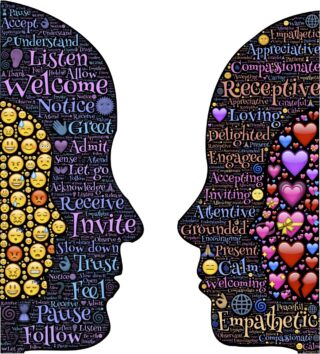Empathy is the ability to understand and share in the feelings of others. So often we are absorbed in our own experience that it can be difficult to see and feel what and how something is affecting someone else. Demonstrating empathy helps us connect with one another and share experiences. While the two may not seem very closely connected, various types of art and performance art can help teach us more about empathy. Exactly how can these art forms expand our understanding of each other’s experiences and emotions?
Cultivating Empathy Through Music
Several studies have shown that children exposed to music, especially in groups, demonstrate higher levels of empathy. As it turns out, music not only connects people socially but also helps to improve various functions within the brain. As musicians we develop high level listening skills. Being an active listener is an important aspect of being empathetic. We must truly listen to the words of others to understand how to connect with them and act with compassion.
Children who go to music lessons in a group setting often have the chance to socialize with those who come from different socio-economic backgrounds. As students become more familiar with one another, they learn to open themselves up to others, and in return, they allow others to open up to them.
Learning about and listening to music has many beneficial effects on the brain. For example, music lessons have been shown to help reduce anxiety and support the development of working memory. Music also helps to elicit certain feelings and thoughts by evoking an emotional response to sounds and lyrics, which helps others understand experiences that differ from their own.
Cultivating Empathy Through Art
If there is a single thread that connects music, art, and theater, then that thread is the art of storytelling. Every art form acts as a window into the life of others. By nurturing art and storytelling, we can better understand each other – thus, helping to create more empathy.
Creating and sharing arts creates a storytelling experience. When we learn empathy through the act of telling stories, whether through painting, sculpture, or another art medium, it helps us better understand the story. Artists can show empathy as they depict the experience of their subject through their art form.
Cultivating Empathy Through Theatre
Whether you are watching a play or acting in one, there is a great deal of self-reflection that occurs when we connect to a character. Actors constantly have to learn as much about their characters as possible to play them well. It is not enough to know what a character does. Actors must find the why and apply that by showing others a character’s emotions, motivations, and flaws. Theatre also provides a safe place for children to learn empathy. They can see how differences or conflict is addresses and have opportunities to discuss opportunities for understanding and resolution.
While watching characters interact within a story, the audience makes connections between themselves and the characters. This very act is an exercise in empathy. As you watch the characters on stage interact and behave, you practice your ability to understand them. Experiencing theatre is like examining life through a looking glass. We are connecting with a character, while experiencing what he or she is feeling and thinking, as if we were feeling or thinking it ourselves.
Final Thoughts
Because art creates new ways to share stories and experiences from an emotional source, it allows us to practice the same mechanisms and processes that we use to feel empathy for those in our own lives. It is best to think of empathy as a muscle – the more you use it, the stronger it gets. We use empathy more through music, art, and theater, which gives us the opportunity to use it in our real lives.
